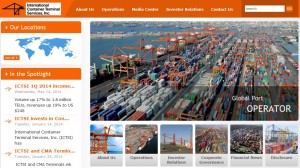Video by INQUIRER.net’s Cathy Miranda
MANILA, Philippines—Dubbed the “rising star” of Asia, the Philippines has recently been turning heads with its unprecedented economic growth.
Testament to that is the decision of the World Economic Forum (WEF) to hold its East Asia meeting in the country for the first time in 23 years.
“It has definitely captured the attention of the global community,” Sushant Palakurthi Rao, WEF senior director and head of South East Asia, said of the country once called the “sick man of Asia.”
The WEF has been touting the Philippines’ growth as “one of the greatest economic comeback stories,” claiming that it may soon be the strongest performing South East Asian economy.
Rao said they have been paying attention to the country’s economic turn-around since President Benigno Aquino III took office.
“Even from our own internal perspective, the Philippines is the best improved economy in the report, having moved up 30 places in the rankings since 2009,” he said, referring to the World Bank’s recent Doing Business survey.
The WEF on East Asia is a three-day event that will be held on May 21 to 23 in the cities of Makati and Manila. It will include a number of conferences that tackle a wide range of topics, from economy to climate change.
More than 600 delegates from 30 countries have started to arrive in the Philippines for the forum that has led the government to put its best foot forward. Aquino himself said it was the perfect opportunity to show other nations that “It’s More Fun in the Philippines.”
Regional outlook
The senior director said the World Economic Forum, an independent international organization, has been holding annual meetings to engage political, business and civil society leaders and seek solutions to the world’s overarching problems.
Best known for its annual meeting in Davos, Switzerland, Rao said, the issues tackled there are brought to different parts of the world “put them under the microscope of the regions” to understand the views and approaches of local leaders.
“And that’s very much a reflection of our strategy to engage with the interests of our members and our communities in the forum but also to reflect the geo-economic and geo-political interests and development that we get as inputs from our communities,” he said.
The WEF is composed of 1,000 officials from the world’s top corporations and global enterprises.
Rao said their meetings are more than just conferences “because the participants reflect top decision makers, not only from the economic sectors but also from policymaking, from civil society.”
Aside from business leaders, WEF also invited non-government organizations, spiritual leaders, social entrepreneurs and young leaders.
Personalities and groups not likely to meet in normal circumstances are gathered by WEF for their sessions.
“This breaks the silos (divisions) and allows these leaders from different walks of life, different parts of the world, with different experiences and expertise to come together and give a very holistic approach to addressing these challenges,” he said.
As with all of their regional meetings, Rao said they expect to “move the needle forward on a wide range of issues.”
RELATED STORIES


